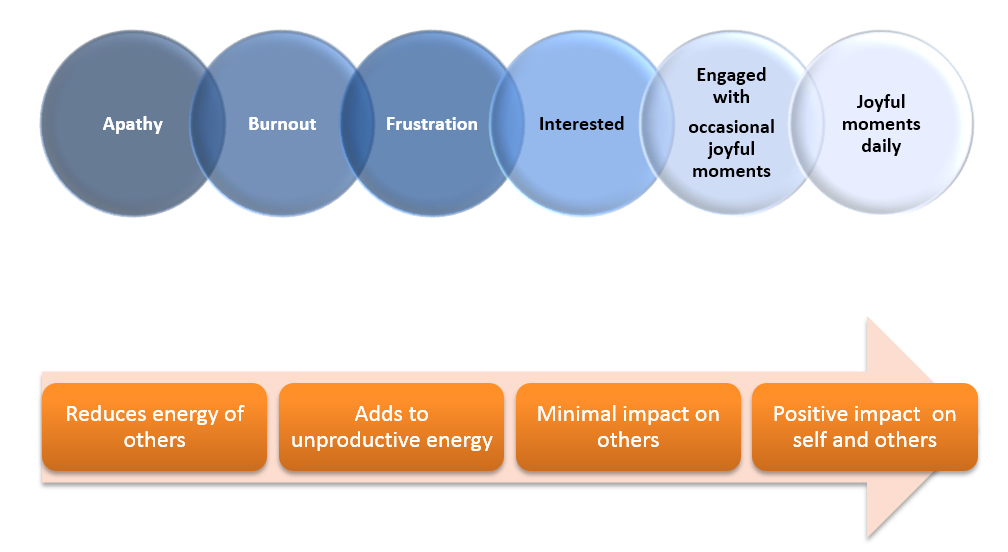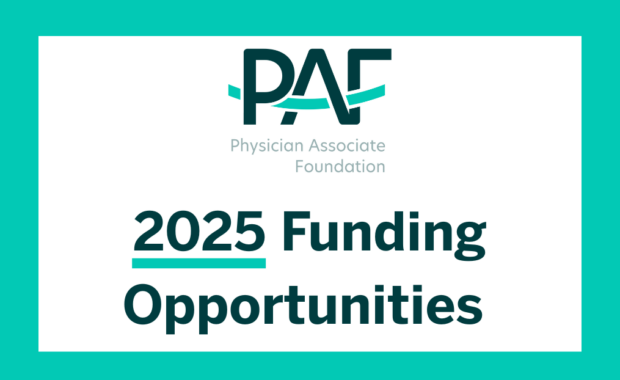Create More Joy in Your Work in 2018
Five Tactics for Greater Fulfillment
By Eileen Denne, CAE, APR

Still determined to fulfill New Year’s resolutions? One that you may have missed is increasing joy in your work as a PA. James L. Lonquist, MD, FACS, Baptist Heart & Vascular Institute, and physician coach with HealthStream, has suggestions to help you assess burnout and identify barriers to joy, before making your 2018 plans to bring more enjoyment to your work.
A board-certified cardiothoracic surgeon and vein care specialist with more than 20 years of experience, Dr. Lonquist sees patients at the Cardiology Consultants office in Pensacola, Fla. He works with PAs on a daily basis and finds them to be an indispensable part of his practice. He spoke to attendees at AAPA’s Center for Healthcare Leadership and Management’s (CHLM) Executive Leadership Conference last November about the current state of medicine and related barriers to joy.
Barriers and Burnout
“One barrier I have personally experienced and have heard about from providers around the country is dissatisfaction with electronic health records (EHR),” Lonquist says. As a practicing surgeon he recognizes the benefits of EHR – universally, providers agree with the concept of better remote access and patient records and improvement in quality care. But, he says, they are dissatisfied with the poor user-friendliness and time they have to spend using the technology.
Another barrier, according to the MedCity News, is that 86 percent of patients Google their symptoms before a medical appointment. Access to information has made patients experts in their own healthcare.
These two factors alone can lead to high burnout rates of 66 percent of emergency medicine PAs and 64 percent of rural PAs. They can experience high levels of emotional exhaustion, feelings of depersonalization, and lack of personal accomplishment, according to a study by the Robert Wood Johnson Foundation.
“Herbert Freudenberger studied burnout in the 1970s and he defines it as ‘a process that is caused by a depletion of energies, as well as feelings of being overwhelmed with many issues that may confront an individual in a work-related setting’,” says Lonquist.
Providers experiencing burnout have lower levels of clinical-care quality, patient satisfaction and higher levels of medical errors: a conservative estimate shows 98,000 lives are lost each year due to medical error and annual costs of medical mistakes are estimated to be between $17 and $30 billion.
Consider Joy in the Workplace
So what’s a PA to do? Lonquist suggests thinking about a time you experienced joy in the workplace: what did it feel like; why do we want it; and what will it get us?
The word “joy” brings up some emotional and physical reactions, Lonquist says, but it is important to be mindful about the language that best describes what is important to you: satisfaction, work-life balance, feeling fulfilled, camaraderie, providing quality care. Salary may not be a motivator as long as it is fair market value and in a competitive range.

Consider what brings you joy in your work environment. Joy is contagious and it has a very dramatic impact on others. One recent Institute for Healthcare Improvement study shows that joy is about having a personal impact: if you reconnect with joy and purpose in your work, it increases compassion and empathy and improves physical and mental health. Teamwork and collegiality can also bring joy, improve patient safety and experiences, improve work environments, and reduce staff turnover.
Lonquist adds, “The biggest risk of a healthcare setting without joy is losing the focus on providing quality care to our patients in a healthy nurturing environment.”
Tactics for Fulfillment
“We are in the business of providing great care and service to people when we are in one of the most difficult positions in life: helping them [during] experiences they have never been through,” Lonquist says. “We have to be able to empathize and meet patients where they are. Our organizations are best equipped to develop the culture, provide the tools, resources, and tactics that will allow us to create the very best experience for everyone coming through our doors.”
A single PA turnover can cost more than $230,000, according to MD Magazine, so leaders, marketers, those in provider relations – and providers themselves – would be well advised to take steps to help create joy, Lonquist says.
“I believe the most important factor in creating satisfaction is to generate a sense of engagement surrounding the quality and safety programs in the healthcare institution.”
He suggests that PAs build trust with leaders and make plans to meet with them individually. Prepare the message you want them to hear and then go to them in their office or clinic, Lonquist says. Use a person-centered communication model to build trust.
“Extraordinary leaders design, convene and have effective communication, so learning about language and models for communication is critical for even the most experienced of us…it is through language that we create and generate relationships, moods, emotions and our public identity…most relationships are not physical but conversational.”
Source: Language and the Pursuit of Leadership Excellence by Chalmay Brothers and Vinay Kumar
Lonquist suggests five ways organizational leaders can create satisfaction and joy in work:
1. Involve PAs in decision-making.
Try These:
a. Purposeful rounding on PAs: scheduled, with a message, prepared to listen and act.
b. Get PAs involved early. Seek early adopters, tap into what motivates them, engage them to be a part of the change.
c. Create channels to foster engagement (quality/safety/PX boards, care redesign).
2. Demonstrate continual efforts to improve quality.
Try These:
a. Recognize the challenge of joyful moments.
b. Encourage mindfulness and/or identify ways to find more joy.
c. Create a mentoring group, helping with professional growth of others.
d. Seek out quality wins and celebrations.
e. Create pillar awards.
3. Cultivate open and honest communication.
Try These:
a. Self-assessment: What brings you joy? What do you do each day to find your joy? How do you help others find their joy?
b. Senior Leader Rounding.
c. Create a Provider Engagement Team: Make it fun.
d. Leverage marketing channels for communication campaigns to keep PAs informed.
4. Build confidence in and excitement for the decisions guiding your organization.
Try These:
a. Relate for two-way person-centered communication.
b. Recruit a PA champion.
c. Connect champions and providers to purpose.
d. Create joyful moments in employer newsletter or “Mission Moments” to share and recognize.
e. Strategically align medical staff meetings and events to create emotional investment.
5. Be responsive to addressing issues important to patient care.
Try These:
a. Purposeful rounding on patients to bring feedback to physicians.
b. Share data and give feedback.
c. Leverage patient and family advisory councils.
In addition to the five ways to influence joy and satisfaction in the workplace, Lonquist adds, “I encourage PAs to play a proactive role in the development of new and better ways to take care of patients.”
Eileen Denne, CAE, APR, is AAPA’s director of corporate communications. Contact her at [email protected].
Thank you for reading AAPA’s News Central
You have 2 articles left this month. Create a free account to read more stories, or become a member for more access to exclusive benefits! Already have an account? Log in.


